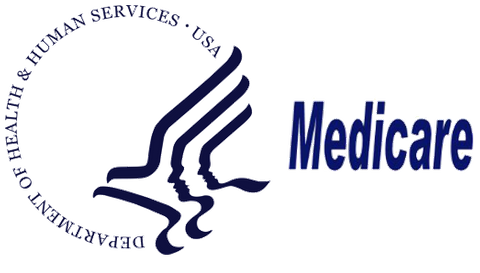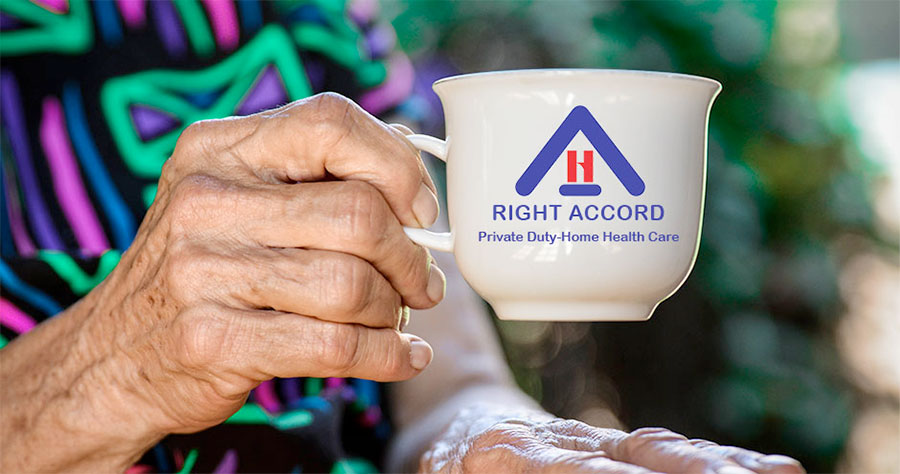· 12 min read
7 Ways to Pay for Your In-Home Senior Care
There are many options when it comes to covering the cost of In-Home Senior Care. They come from various government, private, and non-profit sources. We have put together a list of those sources; what and how much they cover, and how you qualify for them.

By: Rosemarie Tamunday Casanova
In-Home Senior Care can be expensive, especially if you require to have a full-time help. However, if you only need to have two to four hours, once or twice a week, the cost can be much more lower and affordable—the hourly cost varies depending on where you live in the United States. So, considering the cost and financial implications of these payment for In-Home Senior Care, family members are looking forward to various sources to possibly cover the expenses incurred in acquiring these help services.
There are many options when it comes to covering the cost of Senior Care. They come from various government, private, and non-profit sources. We have put together a list of those sources; what and how much they cover, and how you qualify for them.

1. MEDICARE
 Medicare is the federal health insurance program for people who are 65 or older. Medicare also covers certain younger people with disabilities and people with End-Stage Renal Disease (permanent kidney failure requiring dialysis or a transplant, sometimes called ESRD).
Medicare is the federal health insurance program for people who are 65 or older. Medicare also covers certain younger people with disabilities and people with End-Stage Renal Disease (permanent kidney failure requiring dialysis or a transplant, sometimes called ESRD).
Medicare Health Plan
The Medicare Plan is a program administered and funded by the federal government to cover some of the cost of health care. Generally, a Medicare health plan is offered by a private company that contracts with Medicare. It has three parts:
Medicare Part A (Hospital Insurance)
Part A covers hospital expenses like inpatient hospital stays, care in a skilled nursing facility, hospice care, and some home health care.
Medicare Part B (Medical Insurance)
Part B covers all medical expenses such as certain doctors’ services, outpatient care, medical supplies, and preventive services.
Medicare Part D (prescription drug coverage)
Part D adds prescription drug coverage to:
- Original Medicare
- Some Medicare Cost Plans
- Some Medicare Private-Fee-for-Service Plans
- Medicare Medical Savings Account Plans
These plans are offered by insurance companies and other private companies approved by Medicare. Medicare Advantage Plans may also offer prescription drug coverage that follows the same rules as Medicare Prescription Drug Plans.
Note: Part C, also known as Medicare Advantage, is an “all in one” alternative to original Medicare. These bundled plans include Part A, Part B and usually Part D.
Generally, the Medicare Plan will not pay for long-term care. Most of the care provided in long-term care is custodial care, or assistance with Activities of Daily Living (ADLs), which include personal care, bathing, dressing, and grooming. The Medicare Plan will, however, pay for skilled medical care provided by a skilled nursing facility or home health care agency, such as skilled nursing services, wound care, and physical therapy.
2. MEDICAID
Medicaid in the United States is a federal and state program that helps with medical costs for some people with limited income and resources. Medicaid (Medi-Cal in California), also offers benefits not normally covered by Medicare, including nursing home care and personal care services. The Health Insurance Association of America describes Medicaid as “a government insurance program for persons of all ages whose income and resources are insufficient to pay for health care.”
Medicaid Eligibility & Coverage Information
Medicaid coverage is designed to help cover cost of health care for low income individuals who meet certain eligibility requirements. Medicaid will cover some or all of the cost of both medical care and long-term care. Some of the long-term care services covered by Medicaid include custodial care, or assistance with Activities of Daily Living (ADLs), and companionship, which are provided by Non-Medical Home Care Agencies. Medicaid Eligibility Resources According to the Centers for Medicare and Medicaid Services Medicaid Eligibility is determined by the state in which you reside. The Centers for Medicare and Medicaid Services suggests that all person’s who have low income and are in need of health care should apply for Medicaid Coverage.
3. VETERAN HOME CARE BENEFITS
The Veteran’s Care Assistance Program is funded by the federal government to provide veteran’s long term care. The program provides financial assistance for home care services or assisted living care to veterans and their surviving spouses.
Veterans benefits include a wide range of services including long term care, home or community-based care, and nursing home or facility care. Your eligibility for these services will be determined based on your need for ongoing treatment, personal care and assistance, as well as the availability of the service in your location.
You can pre-qualify a Veteran or surviving spouse for the Veteran’s Care Assistance program by asking four questions:
- Is the prospect an American Veteran? Or a spouse (a surviving spouse) of a Veteran?
- Did the Veteran serve at least 90 days of active duty with at least one day during wartime?
- Does Veteran have a medical condition which makes home care services a necessity?
- Does Veteran have limited financial resources with which to pay for home care services?
Veterans have four plans that they may qualify for.
Veteran Directed Care
Like Medicaid’s self-directed care program, this plan allows qualified former service members to manage their own long-term services and supports. It is available in 37 states, the District of Columbia and Puerto Rico for veterans of all ages who are enrolled in the Veterans Health Administration health care system and need the level of care a nursing facility provides but want to live at home or the home of a loved one.
A flexible budget — the average is about $2,200 a month — enables veterans to choose the goods and services they find most useful, including a caregiver to assist with activities of daily living, such as bathing, cooking, feeding, dressing, using the bathroom and adjusting prosthetic devices. The veteran chooses the caregiver and may pick any physically and mentally capable family member including a child, grandchild, sibling or spouse.
VA medical centers determine eligibility and make referrals. Find and contact your nearest center for more information on the program.
Aid and Attendance (A&A) benefits
This program supplements a military pension to help cover the cost of a caregiver, who may be a family member. A&A benefits are available to veterans who qualify for VA pensions and meet at least one of the following criteria. The vet:
- Requires help from another person to perform everyday personal functions such as bathing, dressing and eating.
- Is confined to bed because of disability.
- Is in a nursing home because of physical or mental incapacity.
- Has very limited eyesight, less than 5/200 acuity in both eyes, even with corrective lenses, or a significantly contracted visual field.
- Surviving spouses of qualifying veterans also may be eligible for this benefit.
To apply, complete the A&A application form. Explain why a caregiver is needed, ideally including an attending doctor’s report.
Be specific about the disease or injury that caused physical or mental impairment, and explain on the form your typical day, noting how well you get around, any loss of coordination or any inability to manage basic daily needs without assistance. You can mail the form to the pension management center that serves your state or file in person at your regional VA benefits office.
Housebound benefits
Veterans who receive a military pension and are substantially confined to their immediate premises because of permanent disability can apply for a monthly pension supplement. The application process is the same as for A&A benefits, but you cannot receive both housebound and A&A benefits at the same time.
Program of Comprehensive Assistance for Family Caregivers
This program provides a monthly stipend to family members who serve as caregivers for veterans who need assistance with everyday activities because of a traumatic injury sustained in the line of duty on or after Sept. 11, 2001.
The care recipient must be enrolled in VA health services and require either personal care related to everyday activities or supervision or protection because of conditions sustained after 9/11. The caretaker must be 18 or older and a child, parent, spouse, step-family member, extended family member or full-time housemate of the veteran.
The stipends are pegged to wage rates for professional home health aides and vary based on the amount of time the family member spends on caregiving per week.
In 2017 yearly pay for caregivers under the program ranged from $7,800 to $30,000, according to the Congressional Budget Office. The stipend is not considered taxable income.
Other caregiver benefits through the program include these:
- Access to health insurance and mental health services, including counseling
- Comprehensive training
- Lodging and travel expenses incurred when accompanying vets going through care
- Up to 30 days of respite care per year.
The military caregivers benefit is slated to be expanded to veterans of all eras under the VA Maintaining Internal Systems and Strengthening Integrated Outside Networks (MISSION) Act, signed into law in June 2018. The change was expected to be implemented in 2019, but the VA missed its first deadline to update information technology infrastructure to support the expansion.
In May 2019, the agency told Congress that it is still encountering issues and has not set a new date for expansion.
4. PRIVATE SOURCES
Getting Paid By A Family Member
 If the person needing assistance is mentally sound and has sufficient financial resources, that person can choose to compensate a family member for the same services a professional home health care worker would provide. This is sometimes referred to as private pay.
If the person needing assistance is mentally sound and has sufficient financial resources, that person can choose to compensate a family member for the same services a professional home health care worker would provide. This is sometimes referred to as private pay.
Also known as paying “out-of-pocket,” private pay means your loved one or their family will use existing savings and assets to cover the cost of elderly care services. Private pay is one of the most common forms of payment and is accepted by nearly every elderly care service.
This type of care is an appropriate expenditure for use of the care receivers’ personal savings. Often family will also contribute as needed to help cover the cost. Holding a family meeting to discuss the need for the home care service, the cost of the care, and the means available to cover the cost can help surface concerns from family members, and gain support to help cover the expense.
5. LONG TERM CARE COSTS AND RESOURCES
What is Long-Term Care Insurance?
A policy that helps cover the cost of long-term care. Policy coverage includes services provided by both Assisted Living Facilities and Non-Medical In-Home Care agencies. Services covered include assistance with Activities of Daily Living (ADLs) such as eating, dressing, bathing, grooming, toileting , transferring in and out of the bed or a chair, and walking.
Do I Need Long-Term Care Insurance?
The need for Long Term Care Insurance is not limited to the elderly. Many people between the ages of 18-64 receive benefits from policies for long-term care. Coverage can be provided indefinitely or for a few months while a person recovers from surgery, injury or an illness.
What are the Costs for Long-Term Care?
The cost of Long-term Care can become quiet astronomical very quickly. The cost for various services can range from $18-28 an hour, so if you require 24 hour care you may need up to $600 a day, making a Long-term Care Insurance policy a must. There are many different types of polices available to consumers. What percentage of the cost of care and what qualifies a person for payment of benefits differs between policies.
If the care receiver has a long-term care insurance policy and the service provided meets the policy criteria, the benefits can offset the cost. Check the policy for how many days of care are required before the policy will start to pay. Determine whether there is coverage for hiring someone privately, or only for hiring through an agency. Some policies require that the attendant be a HHA, LVN (licensed vocational nurse) or CNA, and others do not.
6. REVERSE MORTGAGES FOR SENIORS
What is a Reverse Mortgage for Seniors?
A reverse mortgage is a home loan available to seniors aged 62 years or older. It uses accumulated equity in the home to create a source of income, allowing the senior to improve their quality of life. The funds can be used to offset the costs of retirement and aging, including senior home care, providing the senior the assistance and resources needed to maintain independent living. Requirements For Reverse Mortgage Eligibility One of the borrowers must be at least 62 years of age. Also, a reverse mortgage works best if the home is already paid in full (no outstanding liens). The majority of reverse mortgages are FHA insured. In a reverse mortgage, the value of the home, minus the amount of any existing mortgages, is converted into one cash payment, or a stream of monthly cash payments. During this process, the owner retains ownership of the home, and continues to live there, without having to make monthly payments. Repayment of the loan takes place when the owner (the borrower) is no longer living in the home, or is deceased. The size of reverse mortgage loan is determined by the borrower’s age, the interest rate, and the home’s value. The older the borrower, the larger the percentage of the home’s value that can be borrowed.
Senior Life Settlement Policies and Resources
Senior Life Settlements is an option for policy holders which gives them market value for their policy rather than the cash surrender value offered by their insurance company. In a senior life settlement ownership of an unwanted or unneeded policy is transferred from the policy holder to a third party for more than the cash value offered by the life insurance company. The third party becomes responsible for all premium payments and is now the beneficiary of the policy at maturity.
Benefits and Reasons For a Life Settlement
- Fund replacement, life insurance, annuities, long-term care or investments
- Create a more comfortable retirement lifestyle
- Reduce or eliminate future life insurance premiums
- Fund the purchase of a needed survivorship policy
- Bestow cash gifts to family members or charities
- A profitable alternative to the surrender or lapse of your policy
- The policy is corporately owned (key-man, buy-sell, executive comp, etc.)
- Proceeds of life settlements are used for more appropriate types of insurance
- Risk for which the policy was purchased no longer exists
- The insured has outlived beneficiaries
7. NON-PROFIT GRANTS FOR SENIORS
Senior Grants Guidelines
Senior Grants offered by non-profit organizations are designed to help offset the cost of non-medical home care for the elderly. The amounts vary between grants, but can be as much as a $1000. This money can be used to provide senior respite care services (family relief). The Alzheimer’s Association offers a grant to cover senior respite care for seniors 60 years of age and older. The grant starts at $1000 and must be used within a 12 month period. The care recipient must have a diagnosis of dementia; a physician’s statement must be included with the application.



